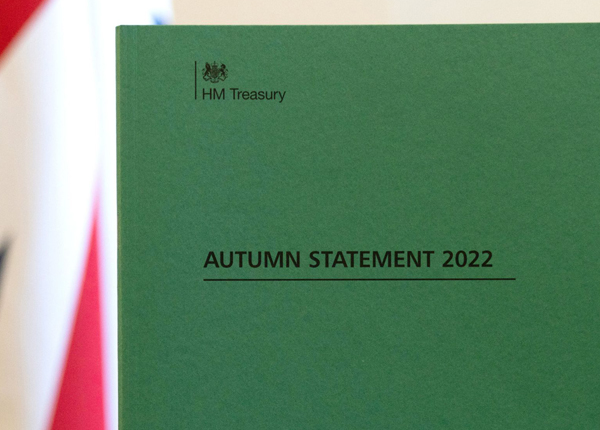Small and Medium Enterprise scheme
One of the biggest changes announced in the Autumn Statement was a reduction in the relief available for small and medium sized enterprises (SMEs) under the governments R&D tax relief scheme.
This could be viewed as surprising change given the government’s wish to promote innovation within the economy, but the rationale outlined by the Chancellor is that it is a counteraction measure to reduce the impact of abusive and fraudulent claims in the SME market.
To provide some background, an SME is currently able to claim an additional corporation tax deduction equal to 130% of qualifying expenditure incurred on R&D projects. If the company is in a profit-making position, this will have the effect of reducing its corporation tax liability for the period. Where a company is loss making, it has the option of exchanging its loss (up to a maximum of the sum of the qualifying expenditure and enhanced deduction) for a tax credit at a rate of 14.5%. Alternatively, the additional loss can be carried forward to be offset against future profits. The announcement in the Autumn Statement was that for expenditure incurred after 1 April 2023, the rate of the enhanced deduction will fall to 86%, and the tax credit rate be applied to qualifying losses will reduce to 10%.
This appears to be a significant drop in the level of relief for SMEs, who will make up the largest proportion of claimants. A company will be an SME if together with its linked and partner enterprises, it has less than 500 employees and either turnover of €100m or less or gross assets of €86m or less.
This all appears to be bad news for innovative SME companies, although the impact of the changes may not be as significant where the company is profitable. This is illustrated in the examples below, which assumes the claimants accounting period ends in March each year.
SME claim comparison
Claim on £100,000 of qualifying expenditure incurred pre-1 April 2023
Additional tax deduction at 130% = £130,000
Position for a tax paying company
Reduction in corporation tax at a 19% CT rate = £24,700
Effective tax relief on R&D expenditure: 24,700/100,000 = 24.7%
Maximum tax credit claimable for a loss-making company
Tax credit on exchange of losses – £100,000 + £130,000 x 14.5% = £33,350
Claim on £100,000 of qualifying expenditure incurred post 1 April 2023
Additional tax deduction at 86% = £86,000
Position for a tax paying company
Reduction in corporation tax at a 25% CT rate = £21,500
Effective tax relief on R&D expenditure: 21,500/100,000 = 21.5%
Maximum tax credit position for a loss-making company
Tax credit on exchange of losses – £100,000 + £86,000 x 10% = £18,600
The examples illustrate that due to the increase in corporation tax rates to 25% from 1 April 2023 onwards, the impact on a profit-making claimant may be less severe than anticipated, with the corporation tax saving on £100,000 of expenditure falling from £24,700 to £21,500. However, in the case of a loss-making company who exchanges their loss for a tax credit, the amount receivable is almost halved. It will, therefore, be even more important for loss-making companies to consider in detail the choice between claiming a tax credit now or carrying losses forward, particularly if there is the possibility of profitability in the short to medium term.
It should be noted that a 19% corporation tax rate will still apply to companies with profits of £50,000 or less with a marginal rate of 26.5% applying to profits falling between £50,000 and £250,000 (the limits being proportionally reduced based on the number of associated companies), therefore the illustrations above would need to be updated to reflect their position.
Large companies’ scheme
There is some good news to report, as the tax credit available in relation the Research and Development Enhanced Credit (RDEC) scheme is being increased. The RDEC scheme is applicable to large companies and also some SMEs where they are unable to make a claim under the main scheme (i.e., where they are a sub-contractor and have received subsidies for projects).
For expenditure incurred from 1 April 2023, the tax credit available to companies on their qualifying expenditure will increase from 13% to 20%. Therefore, if an RDEC claimant had qualifying expenditure of £100,000, the tax credit potentially available would increase to £20,000 as compared to £13,000 under the current regime.
The government’s rationale for being able to improve the RDEC rate is that it is a less competitive level of R&D tax relief from an international perspective, which provides the required scope to improve the benefits available to large companies, without creating a greater risk of abuse.
As a headline, the increase in the RDEC rate from 13% to 20% seems generous. However, it is important to note that the tax credit itself is subject to corporation tax, therefore the true benefit must be calculated net of the corporation tax payable. Using the example above, the actual tax benefit of a claim on £100,000 of expenditure would be £15,000 (£20,000 less corporation tax of 25%), as compared to a current position of £10,530 (£13,000 less corporation tax of 19%).
The changes announced in the Autumn Statement add to a raft of previously announced changes to the R&D tax relief landscape in the UK, therefore, it will be important for claimants to be fully aware of all the implications. One of the most important changes to be aware of is that for accounting periods beginning on or after 1 April 2023, any first-time claimants (or claimants where there has been no claim in the last three years) will need to notify HMRC within six months of the relevant year end of their intention to submit a claim – if this deadline is missed, then a claim will not be accepted.
If you are a company owner and would like to discuss how these changes will impact your business, then please do not hesitate to contact us.






 7 mins
7 mins 
